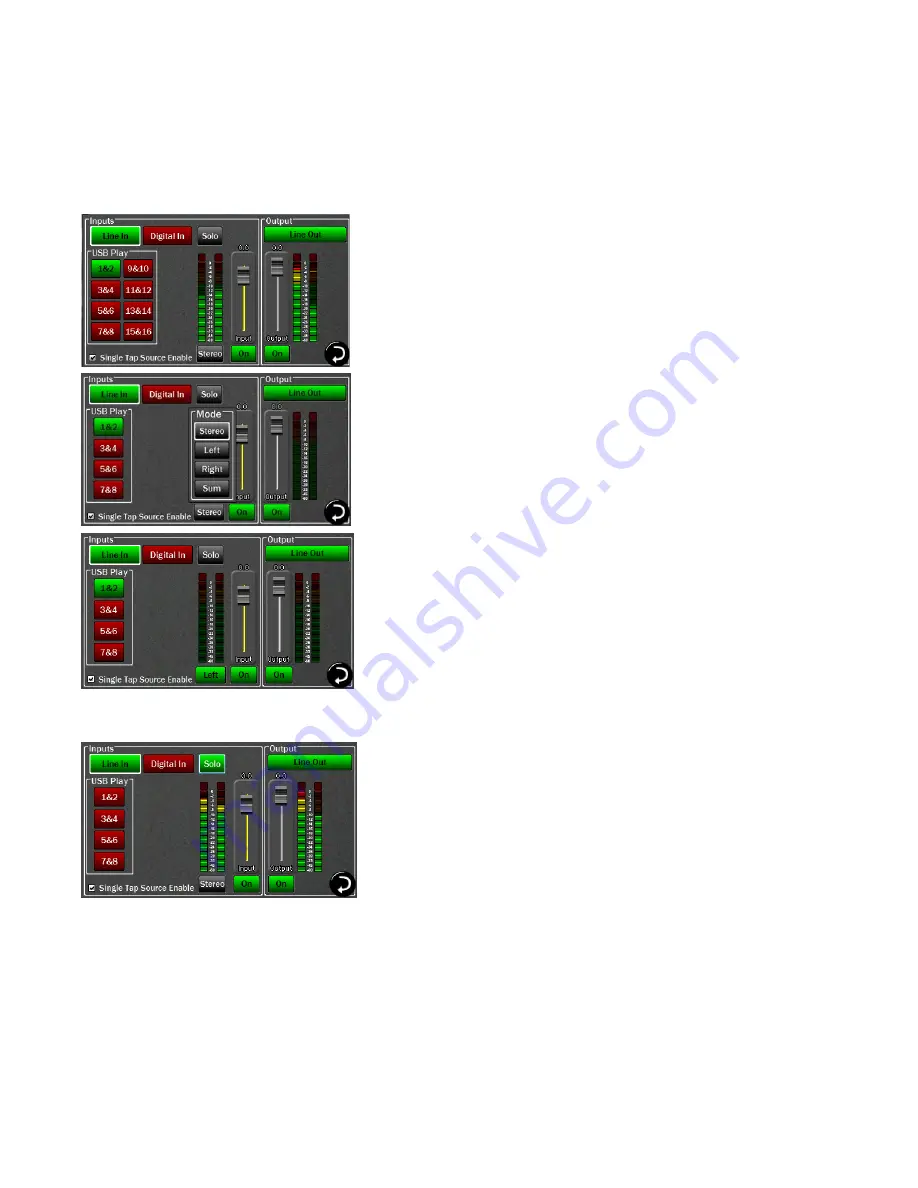
Page 18
3.4.8.1
Monitor Source Modes
The default state for each input source is stereo, with two channels of input, streaming through a two-channel output.
There are 4 different options for routing an input signal to an output. These selections pertain to the operation of a specific input
source routed to a specific output. The setting is not global, and must be set for each output that is being used.
Select the Output channel that you wish to listen to, then press the desired input
source (in this example, Line In).
Then tap the Stereo button under the input meters. You can now choose between:
•
Stereo (default).
•
Left –audio from the Left input channel (in this case Line In Left) streaming to
both output channels.
•
Right –the Right input channel streaming to both output channels.
•
Sum – combining both the Left and Right inputs into one Mono stream which
is sent to both the Left and Right outputs equally. The summed signal is
automatically attenuated by 6dB in order to reduce the possibility of digital
clipping.
The chosen option is shown on the button at the bottom of the Input meters any time
that input channel is selected.
Each input channel can be controlled and assigned independently for each output.
For example, you can have Line In “Summed” sent to the Monitor Output, while
having Line In “Stereo” assigned to the Headphone Output. This flexibility allows
complex routing to be achieved very easily.
3.4.8.2
Solo Button
The Solo button allows any active input channel to be isolated. This allows very
rapid comparison of sources, A/B switching, and a convenient way for
troubleshooting audio anomalies.
Simply press the Solo button and it will engage and turn green with the word “Solo”
blinking.
In this state, press any input source button and you will hear that audio exclusively.
Pressing any other input source will instantly switch to the alternate source.
When done, tapping the Solo button returns Hilo to the previous state, where
multiple input sources can stream to an output simultaneously.






























